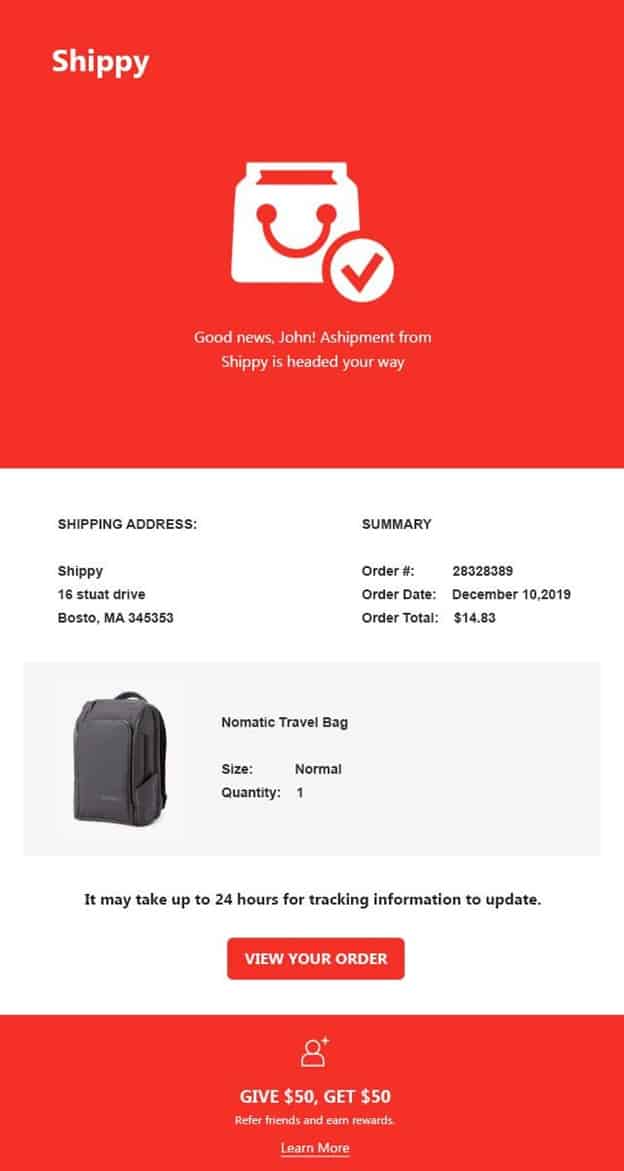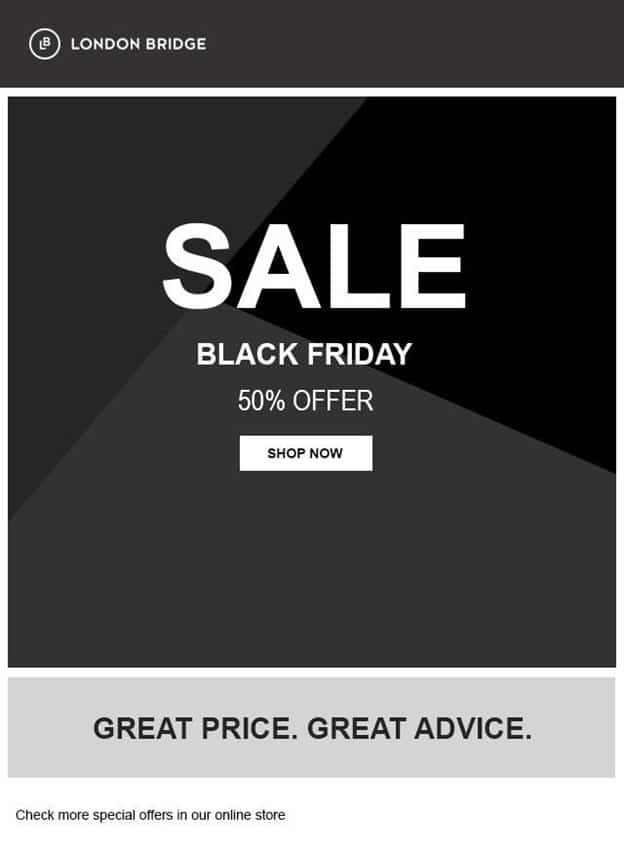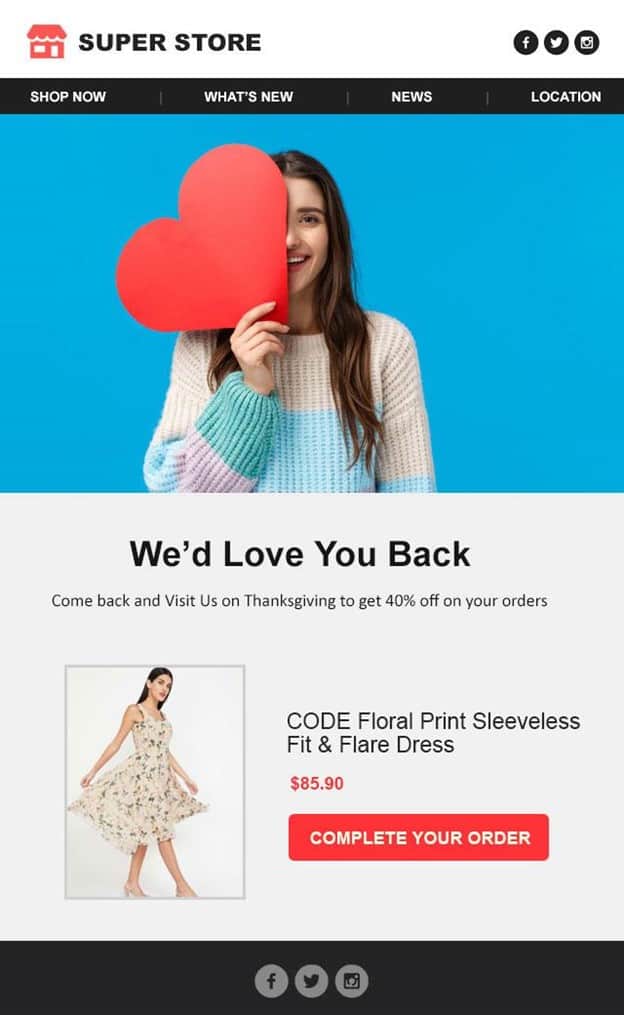
Have you heard that email is dead? Well, if you say it enough times, perhaps it will become true, but to deny the power of email marketing would be a big mistake. Email can deliver an ROI of 3,800%!
That’s certainly reason enough to put focus on growing your email list. But this will only work if the content you send is engaging and valuable to your customers.
If you’re getting started making money online or have no budget or time for marketing – this post is for you. This post will outline what you need to do to grow your Shopify store from the bottom up by using email marketing.
What Is Email Marketing?
Email marketing is a way to deliver messages to your subscribers (people who agreed to receive emails from you). It’s similar to direct mail, allowing companies to send messages directly to their customers.
Many companies use email marketing as part of their overall marketing strategy. For example, they might send out an email announcing new products or discounts on existing ones. They’ll also use it to promote events such as upcoming sales or promotions.
Moreover, the email marketing service for Shopify stores helps you build your brand, increase sales, and develop relationships with customers.
8 Benefits Of Email Marketing For Your Shopify Business

Email marketing is still one of the best ways to reach customers and get them to buy. Email marketing can help you:
1. Easy to Set Up and Maintain
You don’t need any technical expertise to set up an email campaign. You need to create an email template with a few images, text, and links, then send them out when you want them delivered.
2. Increase Sales
Email marketing remains one of the most effective ways to generate new sales. You can send targeted newsletters to your database, offer discounts or deals, and promote new products.
3. Build Loyalty
Send regular updates about your business or industry and create an ongoing customer relationship.
4. Generate Leads
Use email marketing to nurture leads and turn potential customers into buyers by sending them timely information about your products and services.
5. Automate Tasks
With automated workflows and email templates, you can save time by sending out canned messages on a schedule without having to write from scratch every time.
6. High ROI
Email marketing has one of the highest ROIs (returns on investment) for online marketing strategies due partly to its low cost per engagement compared to other digital channels such as social media or PPC (paid search).
7. Personal Touch
Email is a personal communication that makes customers feel valued and appreciated because they get something specific from you rather than just seeing ads on social media or websites like Google search results pages.
8. Flexible
Email can be sent anytime, anywhere — at home or on the go — and you can personalize it with text and images that reflect your brand and offer value to the recipient.
Getting Started With Email Marketing
The first step to getting started with email marketing is defining your audience. This includes identifying the demographics and psychographics of your target market and interests and behaviors.
1. Choose An Email Service Provider (ESP)
An ESP is software that allows you to send emails from multiple platforms. Some also offer other services such as analytics, automation tools, etc. There are many free providers as well as paid ones.
2. Create An Email List
The critical step in sending emails has people’s contact information. You can do this through an opt-in form on your website or with pop-ups, retargeting ads, and other forms on social media channels.
3. Design Your Template
After you’ve gathered all the information about who will receive your emails, it’s time to create an email template for each campaign. Your design should be consistent across all communication channels and look professional and polished.
4. Set Up Your Automation Sequences
It’s time to set up automated sequences to help move people through the buying process — or at least keep them engaged until they’re ready to buy. You can set up as many Shopify automated emails as needed based on where they are in the buying cycle and what actions they’ve taken so far.
5. Keep Track Of Your Campaign Performance
It can be tricky to determine if your campaigns have the desired effect. There are many ways to measure performance, including:
- Open rate: The number of people who opened your email.
- Click-through rate (CTR): The number of people who clicked on a link in your email.
- Unsubscribe rate: The number of people who unsubscribed from your list.
- Conversion rate: The number of people who completed the desired action after receiving an email (such as making a purchase).
- Cost per acquisition (CPA): The cost of acquiring a customer through an email campaign divided by the number of new customers acquired through that campaign.
Different Types Of Email Marketing Campaigns
Email is one of the many ways you can use this powerful marketing tool. While it’s true that email is the most popular way to send marketing messages, it’s by no means the only one.
Here are the essential types of email marketing campaigns you should make a note of:
Transactional Emails
Transactional emails are the “after-sale” emails we send after someone has purchased from us. They include receipts, shipping notifications, and order confirmations. These are necessary for our customers to feel secure about their purchase, but they’re also an opportunity to build trust with your buyers and show them that their satisfaction matters to you.
Promotional Emails
Promotional emails drive sales by promoting relevant products or services to your audience. They can be sent at any time during the customer lifecycle but are most effective when sent directly after a customer has purchased from you or expressed interest in something specific (e.g., product updates). You can also use promotional emails as part of an event marketing campaign (e.g., Black Friday).
Lifecycle emails
These are emails designed to move people through a specific sales funnel and encourage them to take action at each stage of the buying process. Some lifecycle emails are sent when someone takes action on your website (for example, adding a product to their cart but not checking out). In contrast, others are triggered manually by you or your customer support team when they see that someone is having trouble completing their purchase.
Final Thoughts!
And that’s it! These are the steps to getting started with email marketing. Follow them, and you’re guaranteed to create a successful email marketing campaign that will bring in new customers and increase sales. Just remember—consistency is key!



